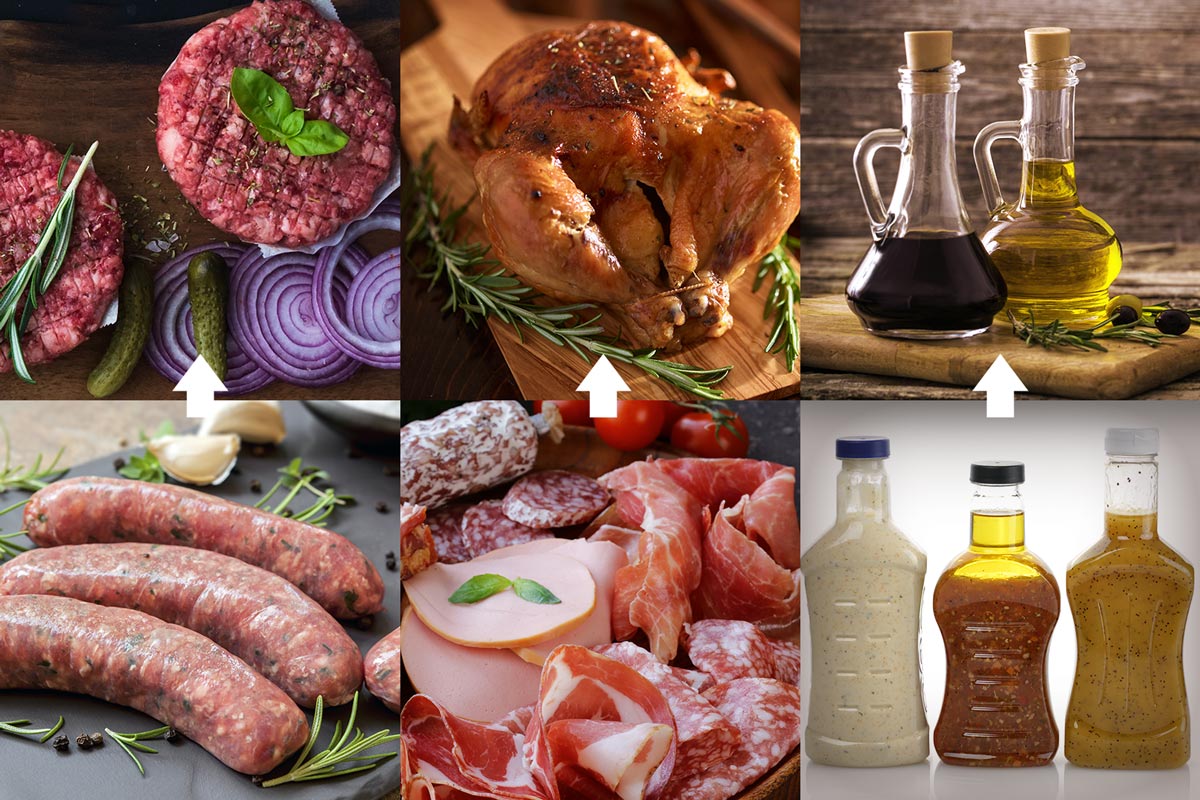Next time your paycheck comes up short, spare a thought for the soldiers of ancient Rome. They were paid partly in salt, after all, which wouldn’t cover too many bills these days. Then, when the soldiers retired from the army, they became…wait for it…seasoned veterans!
The good news: That’s the last condiment pun you’ll read for awhile. The bad news: Canadian guys, as a whole, eat way too much salt (which is also known as sodium chloride).
How much is too much? According to the Dieticians of Canada, the average Canadian consumes 3,400 milligrams of sodium per day, which is more than twice as much as you need for good health.
The dark side of salt
Too much salt is trouble waiting to happen. It increases the risk of high blood pressure, which can lead to heart disease and stroke. It can also damage the lining of the stomach, which can cause ulcers and cancer. A high salt diet also robs bones of calcium, making them weak and brittle and leading to a condition called osteoporosis — and yes, men can develop osteoporosis. The calcium lost by our bones passes through our kidneys on the way out, and kidney stones can form where this calcium builds up. Passing these stones through your penis can be very painful — like you need to be told — and kidney stones can lead to kidney disease.
Then there’s the weight gain caused by excess salt. There’s no fat, calories or carbs in the stuff, but it does make us thirsty. When we quench this thirst with sugary sodas or alcohol, and then fuel it further by snacking on salty potato chips and pretzels, there’s plenty of fat, calories and carbs involved.
Where does all this salt come from?
Cutting salt from your diet isn’t as simple as avoiding the salt shaker. Over all, adding salt to food only accounts for about 5% of the sodium in it. In fact, a whopping 71 per cent of the sodium in our diets comes from processed and pre-salted restaurant food.
Does that mean we should just let the sodium a-salt continue? (Sorry, we lied about the puns.) No way! By simply swapping these seven salty foods for seven delicious alternatives, you’ll easily sidestep the nasty health risks associated with what’s aptly known as “white death.” Wondering how to reduce salt in food? Wonder no more!
Swapping out salt
Canned or bottled pasta sauces: These pour-and-serve sauces are undeniably convenient, but a whole can typically delivers double the recommended daily intake of sodium. So keep it to half a can, or prepare your pasta another easy and delicious way.
Instant noodles: These just-add-water soup cups or packages can fill the void in a pinch, but one serving packs around 850 mgs of sodium. Yikes! With just a little advance planning, this Easy Chickpea Noodle Soup will slash your salt intake and please your taste buds.
Deli meats: Processed cold cuts are cured, often with salt, so you know where this is going. A 60-gram serving can contain as much as 600 mg of you-know-what. For less sodium, try canned white tuna or roasted chicken breast instead.
Bottled salad dressing: You’re safe with salads, right? Unfortunately, some store-bought salad dressings deliver as much as 400mg of sodium per two-tablespoon serving. Luckily, making your own salad dressing is a snap!
French fries: Swapping a side of fries for a side salad is a no-brainer, given that even a modest side order of fries contains at least 250 mg of sodium (and a boat load of fat).
Sausage: One link of smoked pork sausage contains 562 milligrams of sodium, and have you ever seen a breakfast plate with a single sausage? Three of them maxes out your daily sodium allotment. Bacon is no sodium angel — one rasher contains around 200 mg of the stuff — but keep it to a couple slices and you’ll eat less than what’s in a single sausage.
Snack foods: Even healthy-seeming snacks spell trouble when salt, or high-sodium flavouring, is added. Take pretzels: They are naturally low in fat, but 100 grams of them, a fairly modest serving, contains 1,266 mg of sodium. Salted potato chips are higher in fat and lower in sodium, but not low enough: There’s 480 mg per 100 grams. Good thing almonds and cashews are such great snacks, especially when mixed with other tasty morsels in trail mix.

Let’s Talk!
Did you enjoy this article? Let us know in the comments.
0 Comments